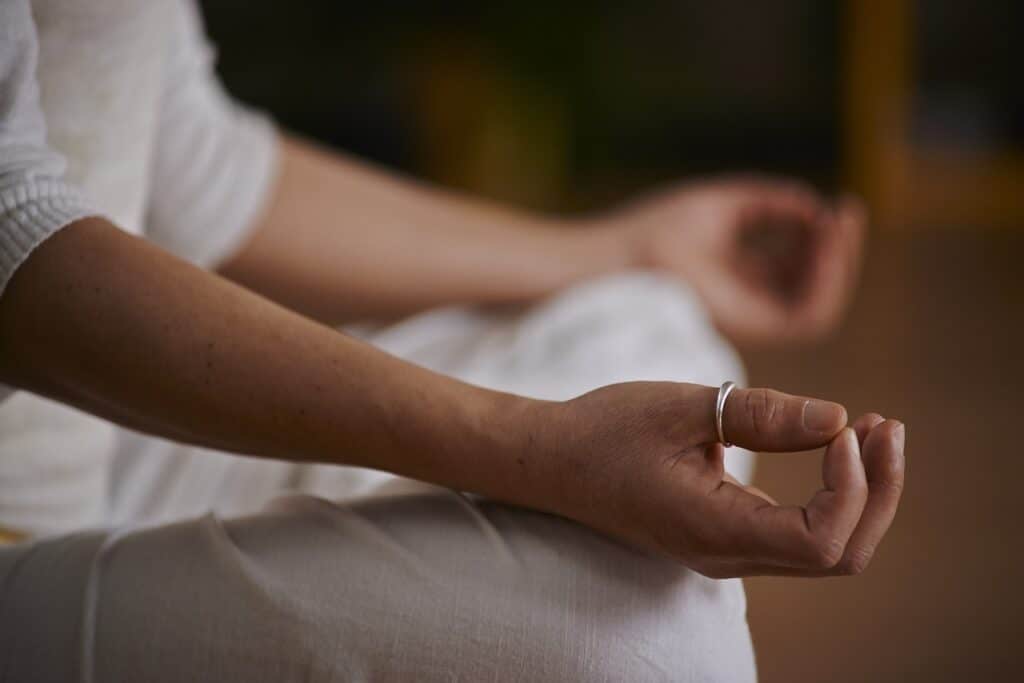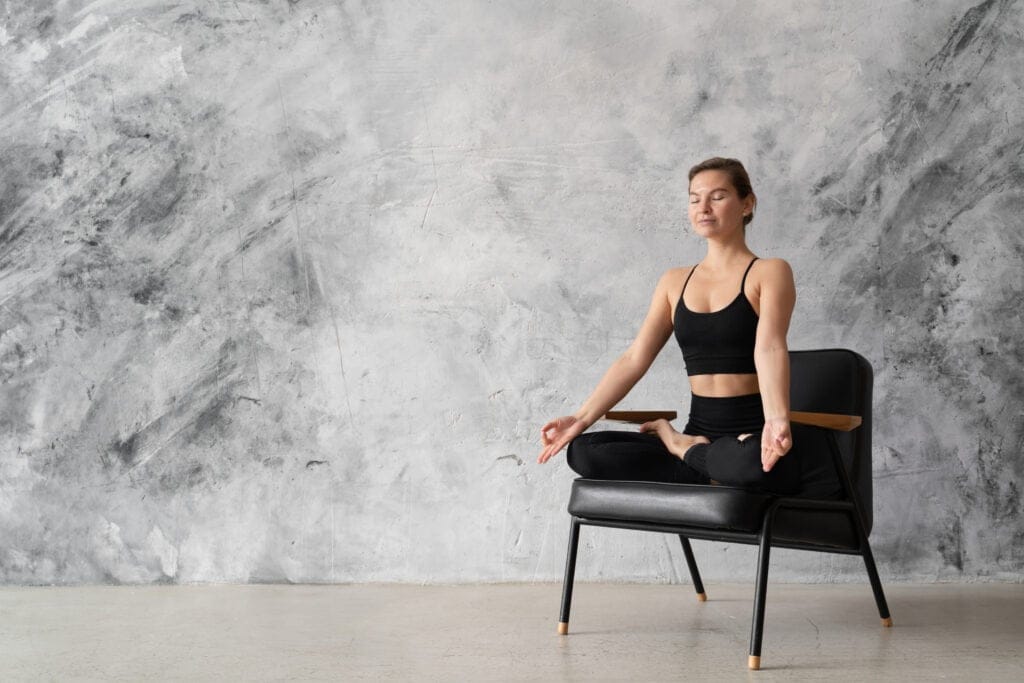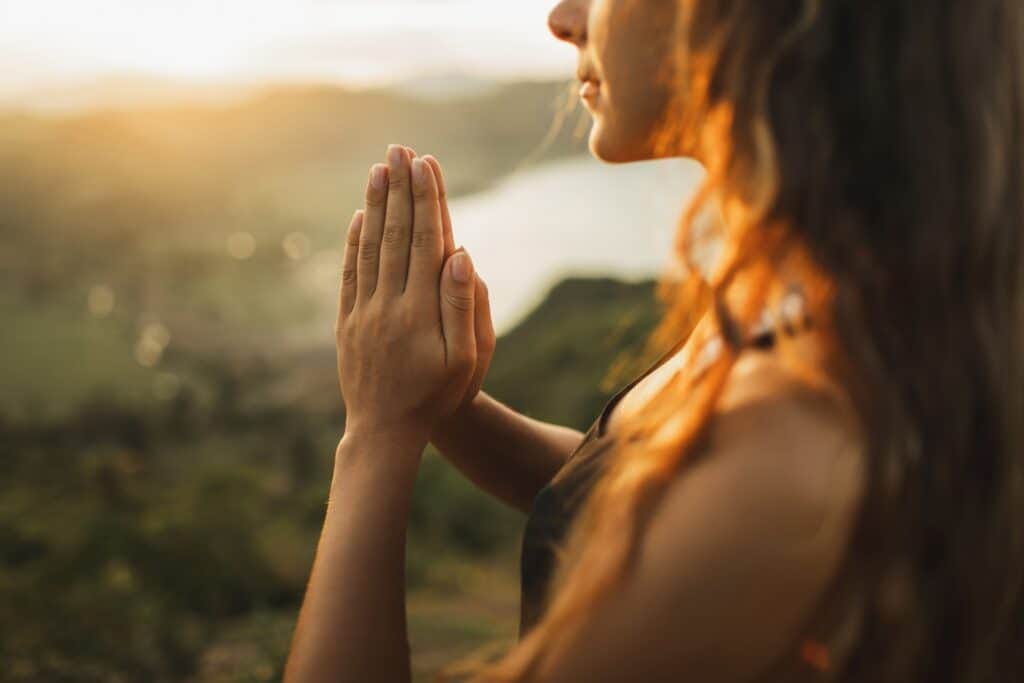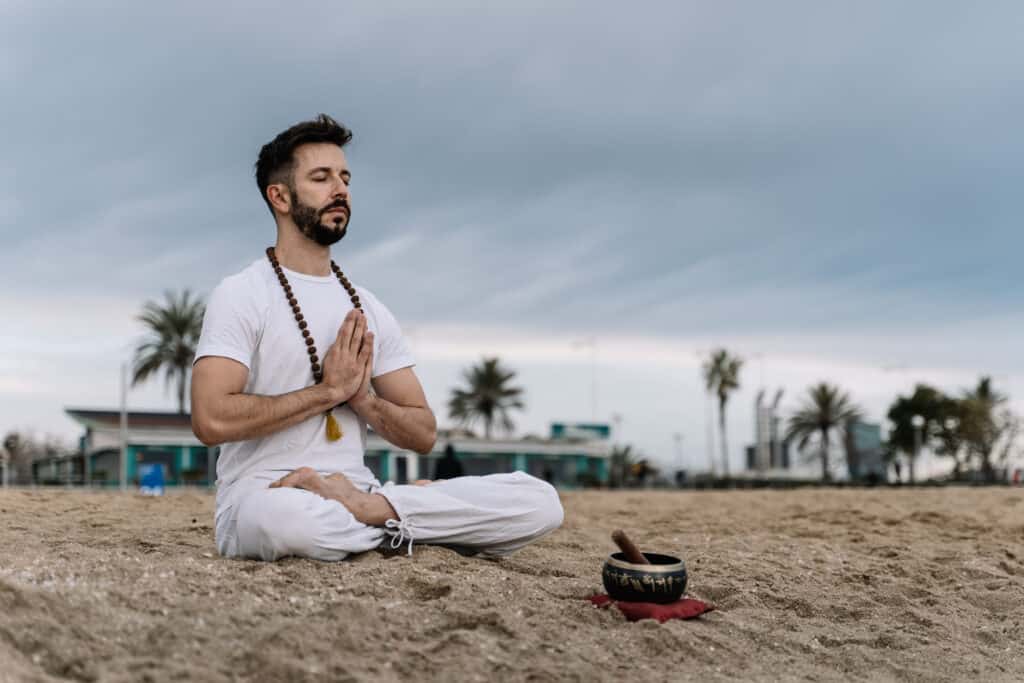Meditation is a practice that has been around for centuries and is becoming increasingly popular in today’s fast-paced world. Many people turn to meditation to help them reduce stress, improve focus, and find inner peace. However, for beginners, meditation can seem daunting and overwhelming.
Fortunately, meditation is a simple practice that anyone can learn. It involves focusing your attention on the present moment and letting go of distracting thoughts. There are many different types of meditation, so beginners can choose the one that works best for them. Some types of meditation involve focusing on the breath, while others involve visualizations or mantras.
If you’re new to meditation, starting small and being patient with yourself is important. Even just a few minutes of meditation per day can have significant benefits. Over time, you can gradually increase the amount of time you spend meditating. With practice, meditation can become a valuable tool for managing stress, improving focus, and cultivating a sense of inner peace.
Understanding Meditation
What is Meditation?
Meditation is a practice that involves training the mind to focus and achieve a state of calm and relaxation. It is a technique that has been used for centuries to promote physical and mental well-being. Meditation can be done in many ways, including sitting, standing, or walking. It can also be done alone or in a group.
There are many different types of meditation, but they all share the goal of calming the mind and achieving a state of inner peace. Some common types of meditation include mindfulness meditation, loving-kindness meditation, and body scan meditation. Each type of meditation has its own unique benefits and techniques.
Benefits of Meditation
Meditation has been shown to have many benefits for both the mind and body. Some of the benefits of meditation include:
- Reducing stress and anxiety
- Improving sleep quality
- Boosting the immune system
- Increasing emotional well-being
- Enhancing focus and concentration
- Lowering blood pressure
- Reducing symptoms of depression
Meditation can also help individuals develop greater self-awareness and improve their overall quality of life.
In conclusion, meditation is a powerful tool that can help individuals achieve a state of calm and relaxation. It has many benefits for both the mind and body and can be practiced in many different ways. By incorporating meditation into their daily routine, individuals can experience improved physical and mental well-being.
Getting Started with Meditation
Meditation is a simple yet powerful way to reduce stress, improve focus, and cultivate inner peace. If you’re new to meditation, it can be challenging to know where to begin. This section will provide you with the basics of getting started with meditation, including simple meditation techniques, guided meditations, and setting up a daily meditation practice.
Simple Meditation Techniques
There are many different meditation techniques, but for beginners, it’s best to start with a simple one. One of the easiest techniques is breath meditation. To practice this technique, find a quiet place to sit comfortably and close your eyes. Focus your attention on your breath, feeling the sensation of the air moving in and out of your body. If your mind starts to wander, gently bring your attention back to your breath.
Another simple technique is body scan meditation. This technique involves mentally scanning each part of your body, starting from your toes and moving up to your head. As you scan each part, notice any sensations or feelings without judgment.
Guided Meditation for Beginners
Guided meditations can be helpful for beginners because they provide structure and guidance for the practice. There are many guided meditations available online or through meditation apps. Some guided meditations focus on specific themes, such as stress reduction or self-compassion. Others may guide you through a visualization exercise or use sound or music to enhance the experience.
Setting Up a Daily Meditation Practice
Consistency is key when it comes to meditation practice. Setting up a daily meditation practice can help you establish a routine and make meditation a habit. Start by setting aside a specific time each day for your practice, even if it’s just a few minutes. Choose a quiet, comfortable place where you won’t be disturbed. Consider using a timer to help you stay focused and avoid the temptation to check the clock.
It’s also important to approach your meditation practice with a sense of curiosity and openness. Don’t worry if your mind wanders or you find staying focused challenging. This is normal, and with practice, it will become easier to quiet your mind and cultivate inner peace.
Preparing for Meditation
Before beginning a meditation practice, preparing oneself and the environment is important to ensure a peaceful and comfortable experience while meditating. This section will cover some essential steps to take before starting meditation.
Choosing a Meditation Space
Choosing a suitable meditation space is crucial to creating a conducive environment for meditation. The space should be quiet, peaceful, and free from distractions.
Choosing a place where one can meditate regularly is recommended, such as a corner of a room or a designated meditation area. Ideally, the space should be clean and uncluttered, with minimal furniture and decorations.
Dress Comfortably
Wearing comfortable clothing is important for meditation. Loose-fitting clothes are recommended, as tight clothing can restrict movement and cause discomfort. It is also important to dress appropriately for the temperature of the room, as being too hot or too cold can be distracting during meditation.
Watch Your Posture
Posture is an essential element of meditation, as it helps to maintain focus and reduce discomfort. It is recommended to sit in an upright posture, with the back straight and the shoulders relaxed. Sitting cross-legged on a cushion or a chair with a straight back is a good option for beginners. Finding a comfortable position that can be maintained for an extended period without causing discomfort is important.
Breath
Breathing is an integral part of meditation, as it helps to calm the mind and relax the body. It is recommended to breathe naturally and deeply without forcing the breath. One can focus on the sensation of the breath moving in and out of the body or count the breaths to maintain focus. It is also important to breathe through the nose, as this helps to filter and warm the air.
By following these simple steps, one can create a peaceful and comfortable environment for meditation. Preparing for meditation can help to reduce distractions and allow for a more focused and relaxed experience.
Meditation Techniques
Meditation is a practice that can help individuals reduce stress, improve focus, and promote relaxation. There are various meditation techniques, and beginners can try different methods to find the one that works best for them.
Here are a few of the more common techniques used by practitioners.
Mindfulness Meditation
Mindfulness meditation involves paying attention to the present moment without judgment. It can help individuals become more aware of their thoughts, emotions, and surroundings. To practice mindfulness meditation, individuals can follow these steps:
- Find a quiet and comfortable place to sit or lie down.
- Close your eyes and focus on your breath.
- Notice the sensation of your breath as it enters and leaves your body.
- If your mind wanders, gently bring your attention back to your breath.
Visualization Meditation
Visualization meditation involves creating a mental image or scenario to promote relaxation and reduce stress. It can involve imagining a peaceful place or visualizing a positive outcome. To practice visualization meditation, individuals can follow these steps:
- Find a quiet and comfortable place to sit or lie down.
- Close your eyes and imagine a peaceful scene or scenario.
- Focus on the details of the scene, such as the colors, sounds, and smells.
- If your mind wanders, gently bring your attention back to the scene.
Breathing Techniques
Breathing techniques involve focusing on the breath to promote relaxation and reduce stress. It can involve counting breaths or focusing on the sensation of the breath. To practice breathing techniques, individuals can follow these steps:
- Find a quiet and comfortable place to sit or lie down.
- Close your eyes and focus on your breath.
- Count your breaths or focus on the sensation of your breath.
- If your mind wanders, gently bring your attention back to your breath.
Refocusing Techniques
Refocusing techniques involve redirecting the attention to a specific object or thought to promote relaxation and reduce stress. It can involve repeating a word or phrase or focusing on a specific object. To practice refocusing techniques, individuals can follow these steps:
- Find a quiet and comfortable place to sit or lie down.
- Choose a word or phrase to repeat or an object to focus on.
- Repeat the word or phrase or focus on the object.
- If your mind wanders, gently bring your attention back to the word, phrase, or object.
Body Scan Meditation
Body scan meditation is a technique that focuses on cultivating awareness of one’s body and its sensations. This practice helps individuals connect with their physical selves, release tension, and enhance relaxation. To practice body scan meditation, individuals can follow these steps:
- Find a quiet and comfortable place to sit or lie down.
- Close your eyes and take a few deep breaths to center yourself.
- Begin focusing your attention on your toes, noticing any sensations, tension, or discomfort.
- Slowly move your attention up your feet, ankles, calves, and knees, observing the sensations in each body part.
- Continue scanning your body, focusing on your thighs, hips, lower back, abdomen, chest, upper back, shoulders, arms, hands, and fingers.
- Next, bring your attention to your neck, jaw, face, and head, being aware of any sensations or tension present.
- Once you have scanned your entire body, take a moment to notice your body as a whole, being aware of the sensations and relaxation that have developed during the practice.
- If your mind wanders, gently bring your attention back to the body part you were focusing on and continue the scan.
- When you feel ready, take a few deep breaths and gently open your eyes, bringing your awareness back to your surroundings.
Practicing body scan meditation regularly can help individuals develop a stronger connection with their physical selves, improve body awareness, and promote overall relaxation and stress reduction. As with any meditation technique, it is essential to be patient and consistent to experience the full benefits of the practice.
There are many techniques that are suitable for beginners. It is important to try several options, get some good guidance and find the best meditation technique that works for you.
Meditation Tools
Meditation can be challenging for beginners, especially when it comes to maintaining focus and keeping track of time. Luckily, there are various tools available to help beginners meditate more effectively. Here are two popular tools that can be helpful:
Meditation Timer
For those new to meditation, there are many techniques to explore that can help with relaxation, stress reduction, and concentration. It’s crucial to find the right technique for your unique needs and commit to regular practice to reap the full benefits of meditation.
Using a meditation timer can help beginners stay focused and avoid the temptation to check the time. A meditation timer is a simple tool that allows you to set a specific amount of time for your meditation session. Once the timer is set, you can start your meditation practice without worrying about the time.
Various meditation timers are available, including physical timers and mobile apps. Physical timers are simple devices that can be set manually, while mobile apps offer more features and customization options.
Headspace App
Headspace is a popular meditation app that offers guided meditations for beginners. The app provides a variety of meditation sessions, ranging from 3 to 60 minutes. Each session is guided by an experienced meditation teacher who provides instructions and tips on how to meditate effectively.
The Headspace app also includes various features that can help beginners establish a consistent meditation practice. For example, the app allows users to set reminders and track their progress over time. Additionally, the app offers various courses and exercises that can help users develop their meditation skills.
Overall, using meditation tools such as a timer or an app can be helpful for beginners who are looking to establish a consistent meditation practice. These tools can help beginners stay focused, keep track of time, and receive guidance and support as they develop their meditation skills.
Benefits of Meditation
Meditation is a simple and effective way to improve overall well-being. It has been practiced for thousands of years and is known to have numerous benefits, including reduced stress, anxiety management, and relaxation. In this section, we will explore these benefits in more detail.
Meditation for Stress Reduction
One of the primary benefits of meditation is stress reduction. Stress can have a negative impact on both physical and mental health. Regular meditation can help reduce stress levels, improving overall health. According to a study published in the Journal of Alternative and Complementary Medicine, meditation can reduce the symptoms of stress-related disorders, such as anxiety and depression.
Meditation for Anxiety Management
Meditation is also an effective tool for managing anxiety. Anxiety is a common mental health condition that can significantly impact daily life. Meditation can help reduce anxiety by promoting relaxation and reducing the symptoms of anxiety.
A study published in the Journal of Psychiatric Practice found that meditation can effectively treat anxiety disorders.
Meditation for Relaxation
Meditation is an excellent way to promote relaxation. It can help reduce muscle tension, lower blood pressure, and slow down the heart rate. This can lead to an overall feeling of calm and relaxation.
According to a study published in the Journal of Behavioral Medicine, meditation can effectively promote relaxation and reduce stress.
Meditation has numerous benefits, including stress reduction, anxiety management, and relaxation. Regular meditation practice can lead to improved overall health and well-being.
Meditation and Yoga
Meditation and yoga are closely related practices that have been used together for centuries to promote physical, mental, and spiritual well-being.
In yoga, meditation is considered an essential component of the practice. After performing physical postures and breathing exercises, the yogi will often take deep breaths and move into a state of meditation to achieve deeper relaxation and mental focus. This can help to reduce stress and anxiety, improve concentration, and enhance spiritual awareness.
Similarly, many people who practice meditation also incorporate yoga into their routine. Yoga postures can be used to prepare the body for meditation by releasing tension and increasing flexibility. The breathing exercises and meditation techniques used in yoga can also be applied to standalone meditation practices, helping to deepen the meditation experience.
Both meditation and yoga can be practiced on their own, but when used together, they can complement each other and enhance their respective benefits. For example, yoga can help to improve physical health and reduce stress, while meditation can enhance mental clarity and promote inner peace. The combination of the two practices can lead to a more balanced and holistic approach to overall health and well-being.
Yoga as Preparation for Meditation
Yoga is often used as a meditation preparation because it helps prepare the body and mind for the meditative state.
Physical postures, or asanas, are a key part of yoga practice. These postures help to stretch and strengthen the body, release tension, and improve flexibility. This physical preparation can be beneficial for meditation because sitting still for an extended period of time can be challenging for some people. Yoga can help make the body more comfortable and relaxed, making it easier to sit for longer periods.
By practicing yoga before meditation, the body is more relaxed, and the mind is more focused.
Yoga and Meditation for Stress Reduction
Both yoga and meditation have been shown to be effective in reducing stress. When practiced together, they can be even more effective. Yoga helps to release physical tension, while meditation helps to calm the mind. By combining the two practices, individuals can experience greater relaxation and inner peace.
Yoga and Meditation for Mindfulness
Mindfulness is the practice of being present in the moment without judgment. Both yoga and meditation can help to cultivate mindfulness. Yoga encourages individuals to focus on their breath and the sensations in their body, while meditation helps to quiet the mind and focus on the present moment.
Yoga and Meditation for Overall Well-Being
Yoga and meditation can also have a positive impact on overall well-being. Regular practice can help reduce anxiety, improve sleep, and increase happiness and contentment. By incorporating both practices into their daily routine, individuals can experience greater physical and mental health.
In conclusion, yoga and meditation are complementary practices that can be used together to promote relaxation, mindfulness, and overall well-being. By practicing yoga before meditation, individuals can prepare their body and mind for stillness.
Together, yoga and meditation can effectively reduce stress, cultivate mindfulness, and improve overall health.








